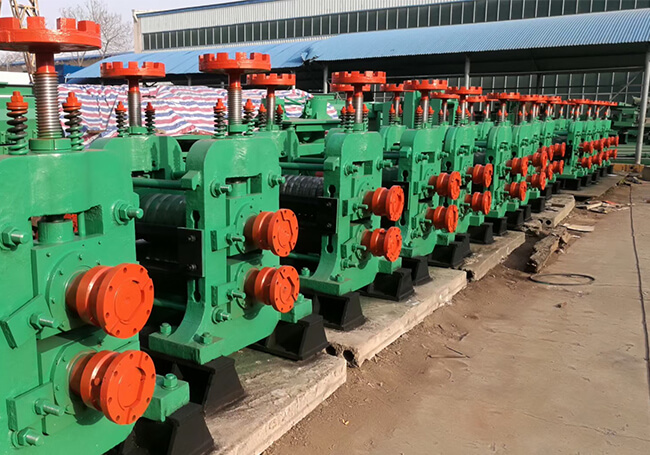The main equipment of the rolling mill is composed of one or several host trains. The main engine column is composed of three basic parts: prime mover, transmission device and actuator. Today we will explain to you about the transmission device of the small rolling mill.
The transmission device in the design consists of a gear frame, a reducer, a coupling, and a connecting shaft.
Gear stand: The working stand is the executive mechanism of the rolling mill. It is composed of the adjustment mechanism of the roll and its bearing roll and the balance mechanism of the upper roll to guide the rolling piece of the rolling stock into the guide device for the roll.
The frame and the rail parts, components and mechanisms used to support the base and fix the base on the foundation. The choice of the form of the electric motor of the rolling mill is closely related to the working system of the rolling mill.
Reducer: The function of the reducer in the rolling mill turns the higher speed of the motor into the speed required by the rolling mill, so a low-priced high-speed motor can be used in the main drive.
The cost of the reducer and its friction loss is lower than the difference between the low-speed motor and the high-speed motor. This is an important condition for using the reducer.
Under normal circumstances, the reducer is only used when the speed of the motor is less than 200-250 rpm.
When a reducer is used, one-stage (transmission ratio i is less than or equal to 8), two-stage (transmission ratio is equal to 8-40) or three-stage (transmission ratio i is greater than 40) reducer is selected according to the size of the transmission ratio.
The roll speeds corresponding to these reducers were 200-250 rpm, 40-50 rpm, and 10-15 rpm, respectively.
A flywheel is used to connect the motor and the reducer, and a flywheel is used to connect the gear frame and the reducer. The flywheel is mounted on the pinion shaft of the reducer. Its function is to actuate the accumulator to balance the transmission load when the roller is idling through the roller.
When the roll is idling, the flywheel accelerates and accumulates energy. When the rolling piece passes through, the flywheel decelerates and releases energy to help rolling. Generally, a rolling mill with a flywheel will be equipped with an alliant shaft.
Coupling: The coupling includes a motor coupling and a main coupling. The motor coupling is used to connect the motor and the drive gear shaft of the reducer.
The main coupling is used to connect the reducer and the drive shaft of the engine base, which transmits torque from the reducer to the driving gear of the gear base.
When the torque on the rolling mill exceeds the rated torque, the coupling can be separated to protect the components of the rolling mill from damage.
Connecting shaft: The motion and torque of the rolling mill gear stand, reducer or motor are all transmitted to the roll through the connecting shaft. If a tandem mill is used, the rolls of the gear stand are driven by connecting shafts.
The connecting shafts used in rolling mills include universal joint shafts, plum blossom joints, joint joints and gear joints. The designed rolling mill adopts the plum-blossom shaft, which is commonly used in the tandem rolling mill.
The irreversible rolling mill uses asynchronous motors. Asynchronous motors are mainly used in rolling mills with severe peak loads. In order to reduce the capacity of the motor, flywheels are sometimes installed. The investment cost of asynchronous motors is relatively low, and it is very suitable for small rolling mills.
This is what we share today about the transmission of small rolling mills, I hope it can help you.
Luoyang Judian is a steel rolling manufacturer, welcome to follow us for more knowledge.

Please send us your request and we reply to you with in 24 hours.
Submit Request